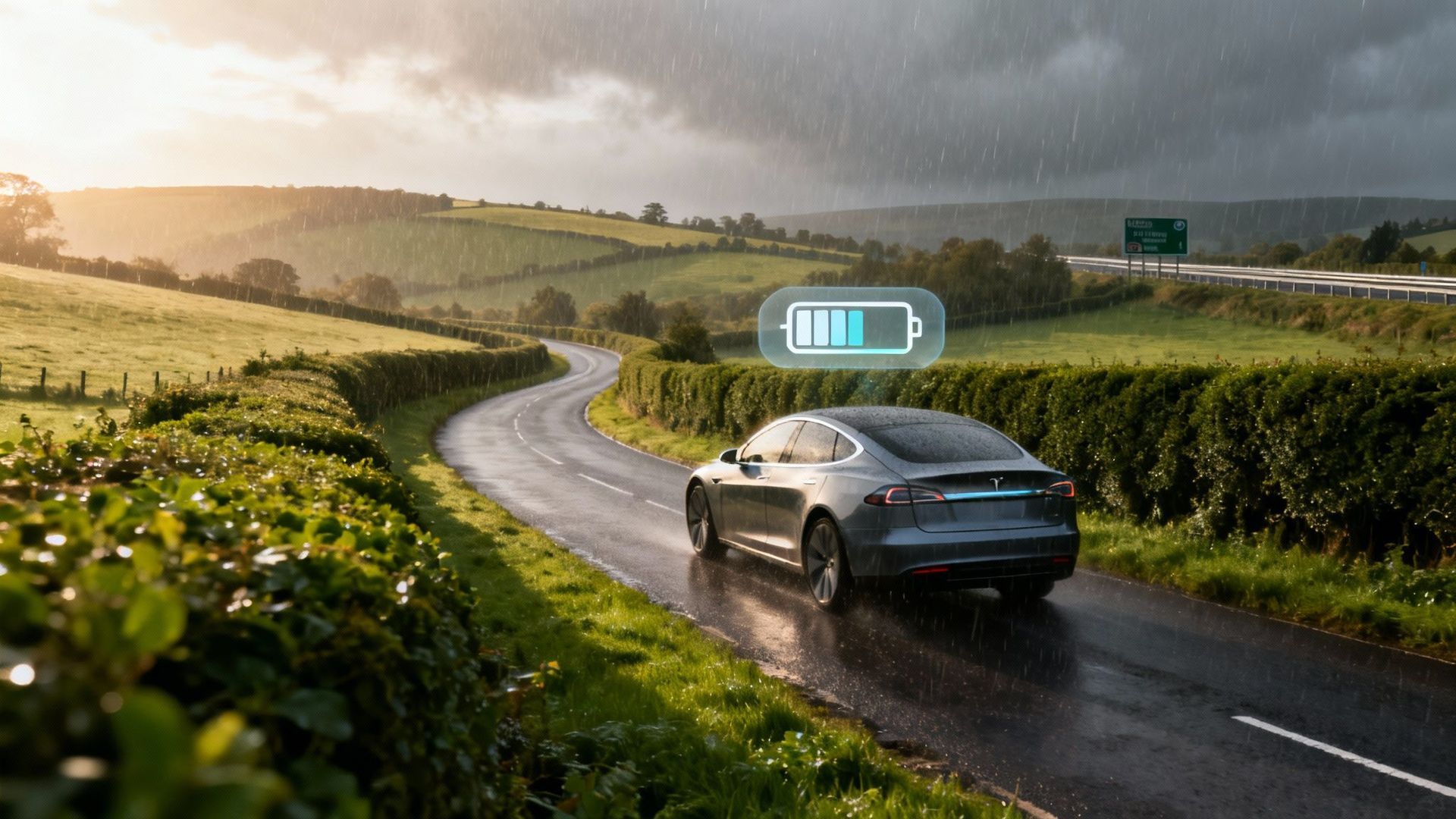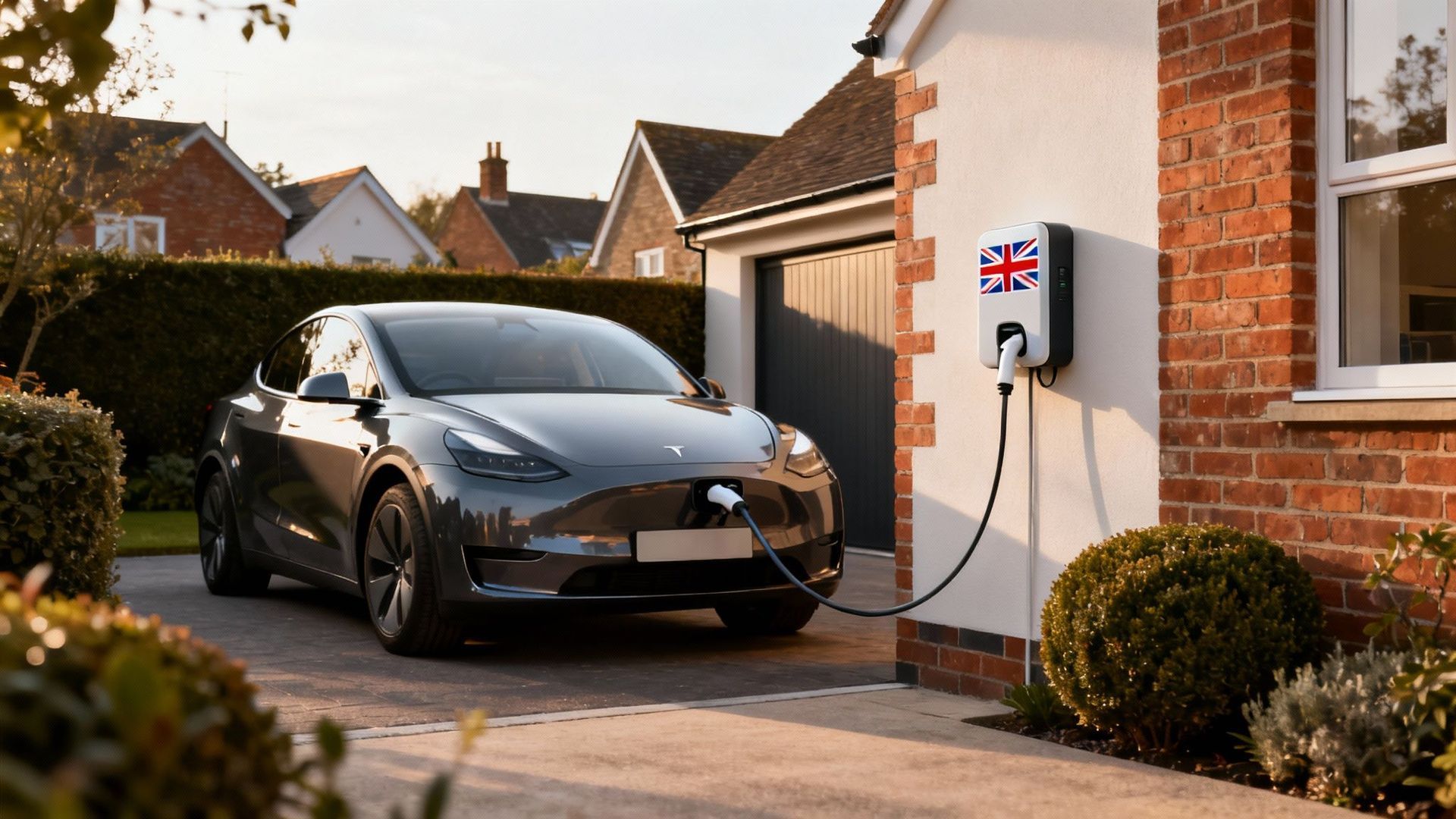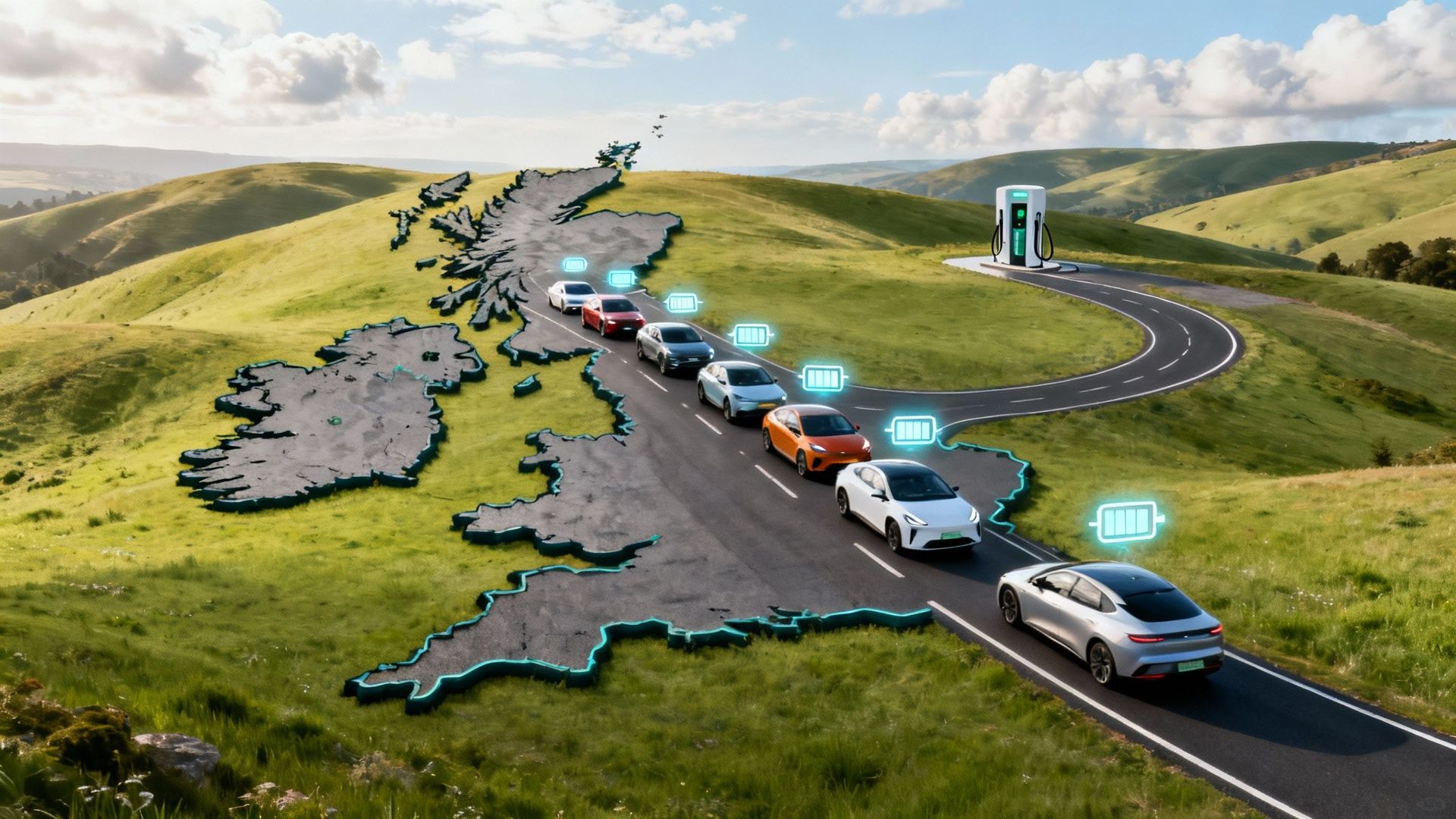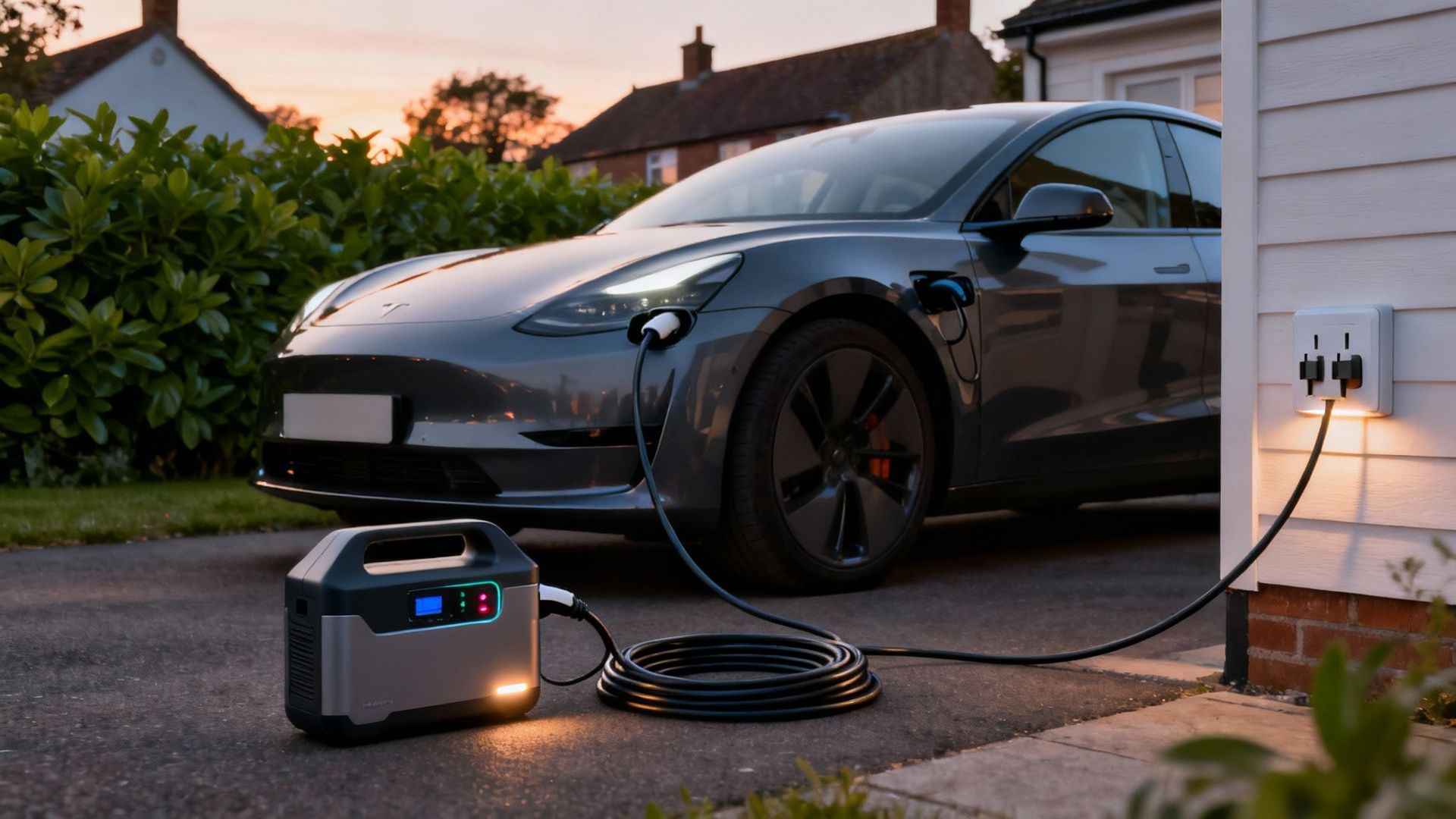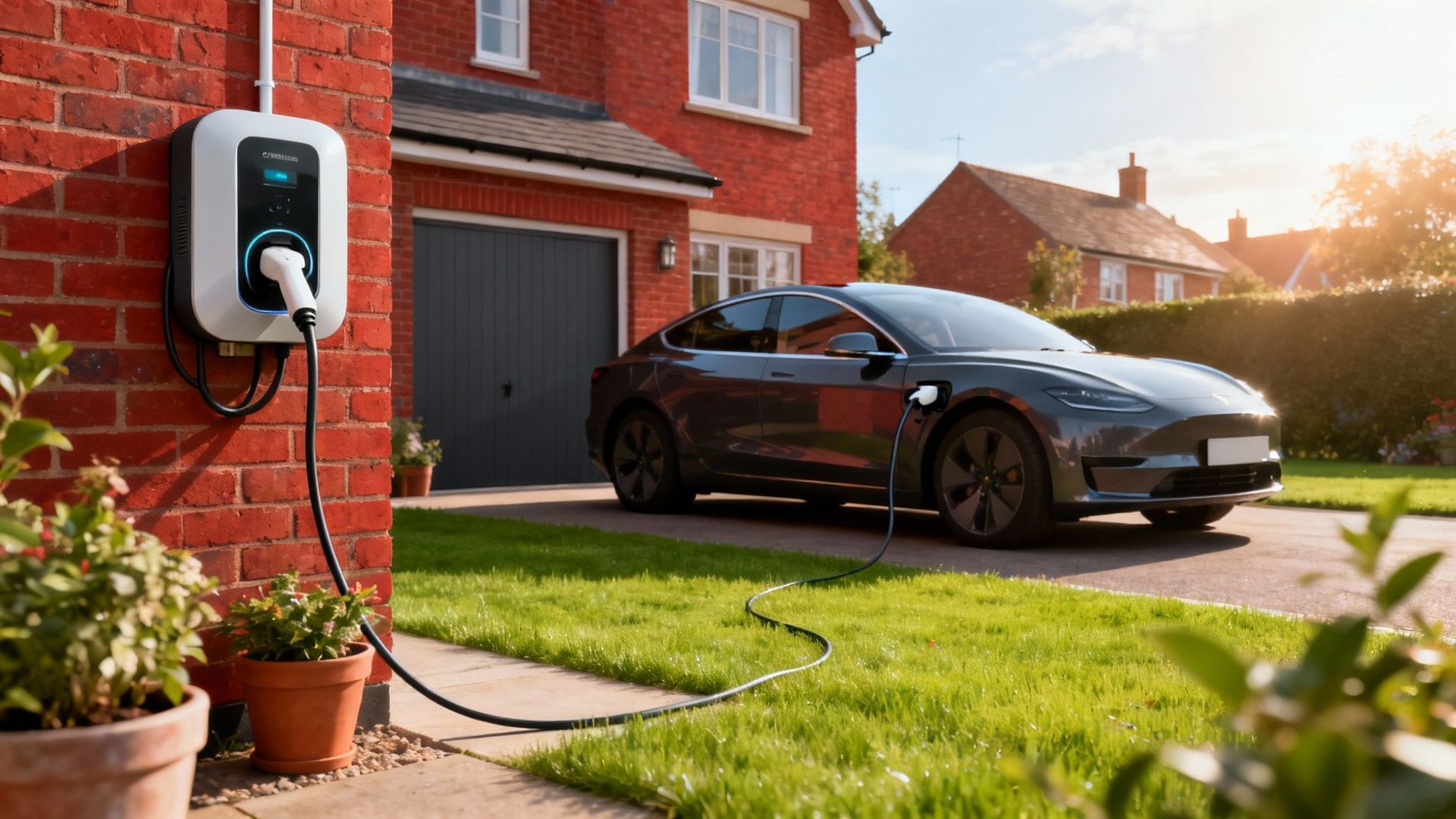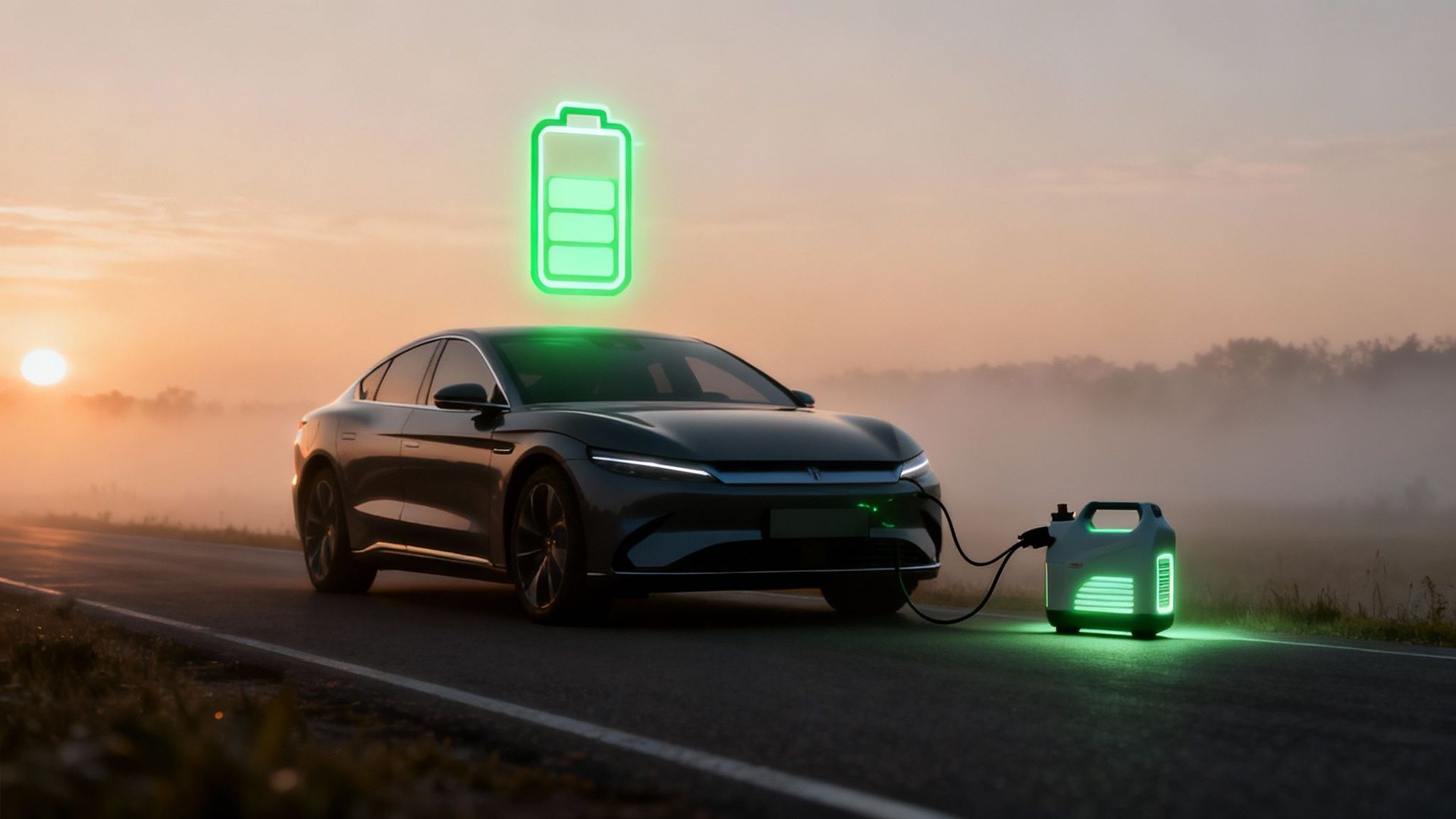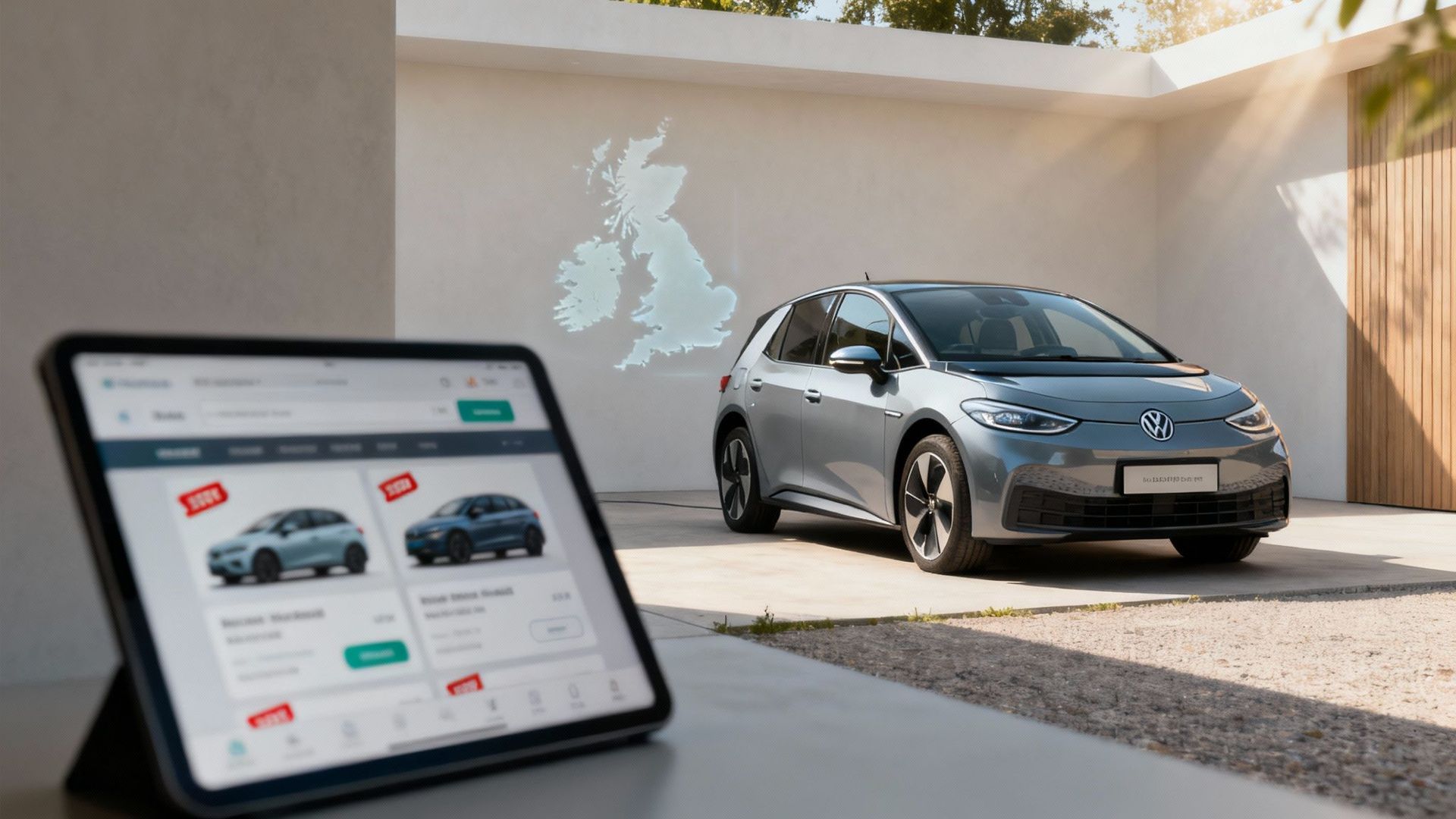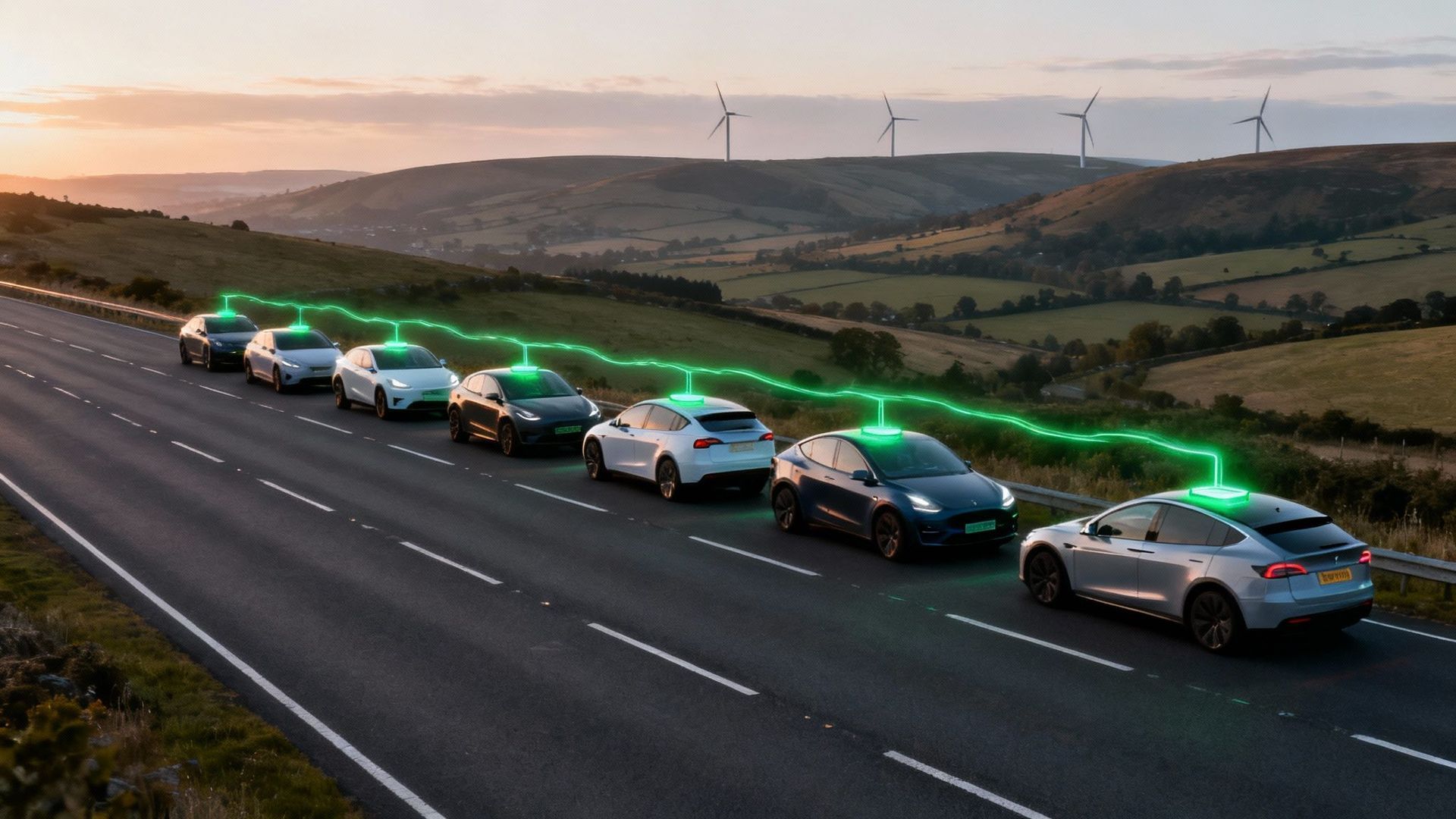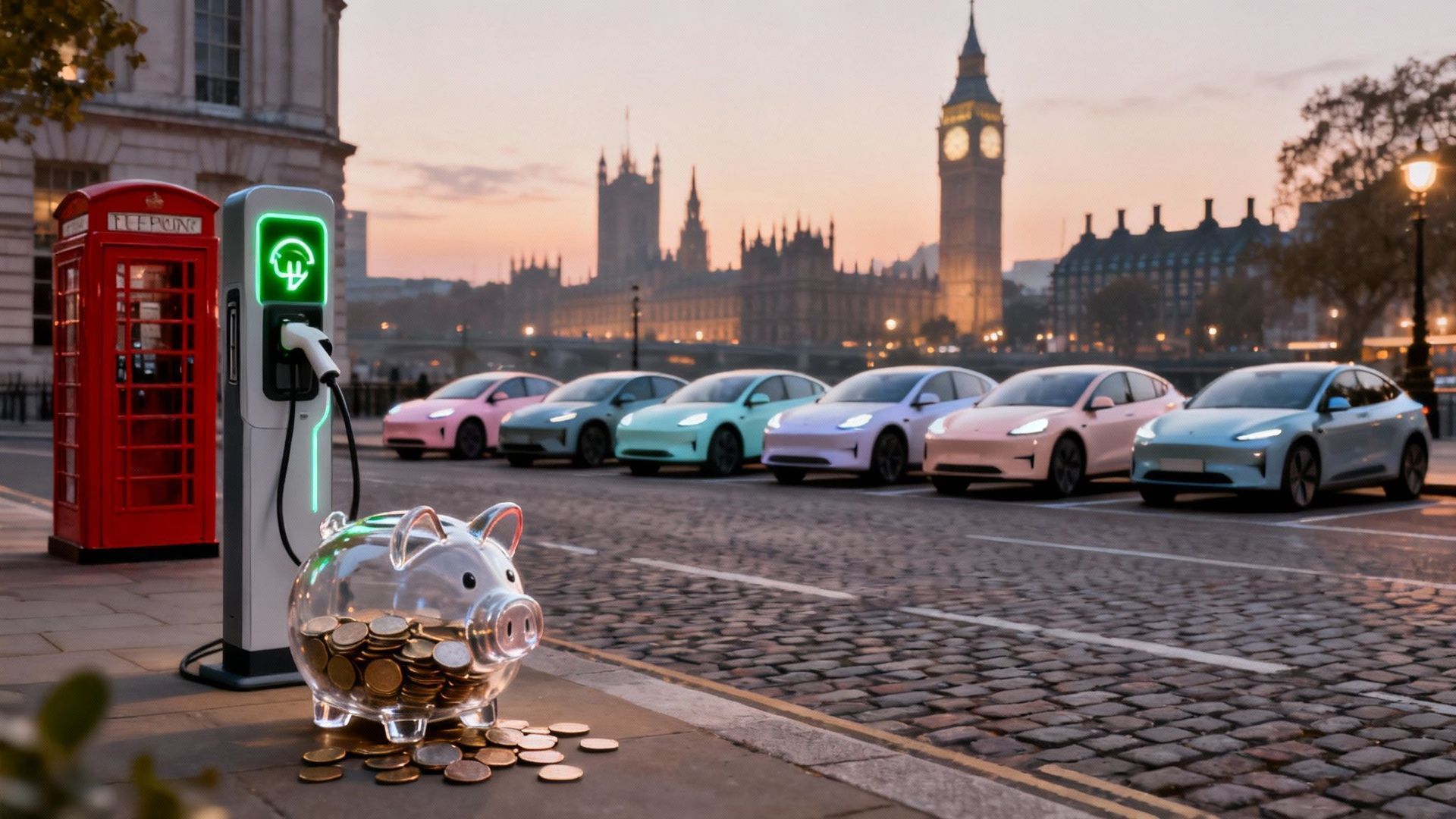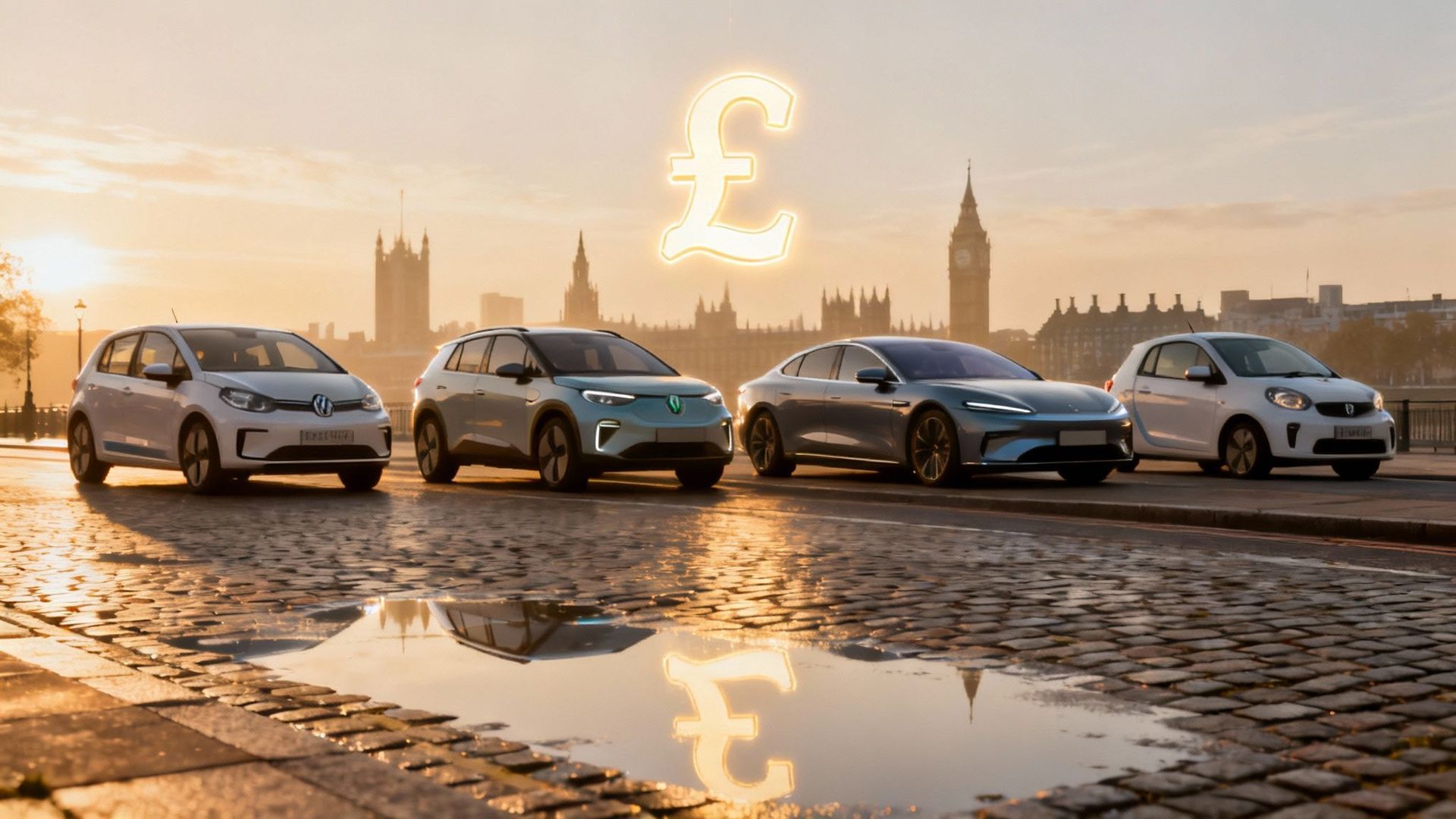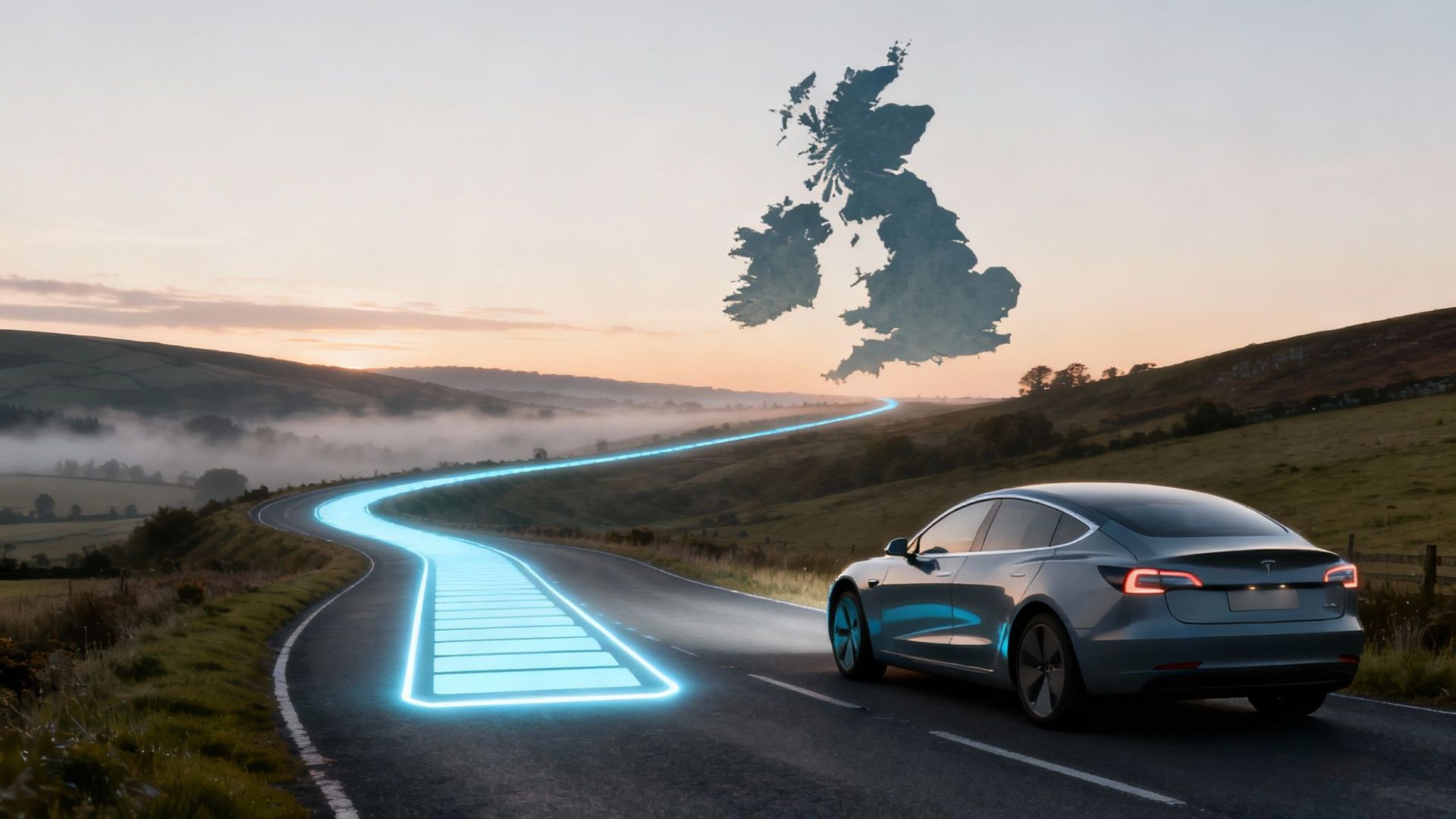The Best EV Home Charger UK? A Sceptic's Guide to Not Getting Ripped Off
So, you're trying to find the best EV home charger in the UK . Welcome to a world of confusing acronyms, baffling price tags, and installers who talk to you like you’ve just woken from a 30-year coma. Before we dive into the bewildering array of shiny plastic boxes, let's tackle the big question: why on earth should you bother with one in the first place? The short answer is that relying on the public charging network is a mug's game, and a home charger is your golden ticket out of the circus.
Why Bother with a Home EV Charger?

Let's be brutally honest. The UK's public charging network is a lottery. You rock up to a charger only to find it's knackered, occupied by a minicab driver settling in for the night, or blocked by a diesel Range Rover whose owner thinks the lines are just suggestions. And for this privilege, you will always pay through the nose.
Trying to live your life around this shambolic system is like playing Russian roulette with your morning commute. A dedicated charger bolted to your own wall is the only sane solution.
The Glorious Convenience of a Full "Tank"
By far, the biggest perk of a home charger is waking up every single morning to a car with a full battery. No more panicked diversions to a dimly lit supermarket car park before work, and zero range anxiety about that meeting three counties away. It’s like having a magic porridge pot for your car – it’s just always ready when you are.
"A home charger fundamentally changes the EV ownership experience. It shifts charging from being an active, often inconvenient, task into a passive, background event that happens while you sleep."
This one simple change vaporises the most common worry people have about going electric. Your car just refuels itself overnight, ready for whatever fresh hell you have planned the next day.
The Surprising Cost Savings (No, Really)
I know, the upfront cost of a home charger and its installation looks steep enough to make your wallet weep. But stick with me, because the long-term savings are colossal. Public charging points, especially the rapid ones, charge per-kWh rates that are frankly daylight robbery. Charging at home, especially if you get a cunning off-peak electricity tariff, is a different beast entirely.
- Off-Peak Tariffs: Energy suppliers, in a rare moment of generosity, offer ludicrously low overnight rates, sometimes as little as 7.5p per kWh .
- Public Charging Costs: By contrast, a public rapid charger will happily relieve you of 75p per kWh or more.
- The Maths: A typical 60kWh battery costs a paltry £4.50 to fill up at home on an off-peak rate. The same charge at a public point? A frankly offensive £45 . The numbers don't just speak for themselves; they scream.
Ditching the public network for your own private charger is a financial no-brainer. If you're still on the fence, our breakdown of whether you should invest in a home charger or stick with public networks has even more ammunition.
Ultimately, getting a home charger is about reclaiming your time, your money, and what's left of your sanity. It turns your EV into the convenient, cheap-to-run machine it was always meant to be, freeing you from the unpredictable public charging pantomime.
Decoding EV Charger Tech Jargon

Wading into the world of EV chargers feels like trying to order a coffee in a painfully trendy café. Suddenly you’re drowning in a sea of jargon that sounds impressive but means sod all to you. kW, tethered, untethered, smart charging, load balancing… it's enough to make you yearn for the simple days of ramming a nozzle in a tank and hoping for the best.
Fear not. Consider this your no-nonsense phrasebook, designed for anyone who just wants to charge their car without needing a degree in electrical engineering. We’re here to bust the jargon so you can choose the best EV home charger for your UK driveway, not just the one with the flashiest marketing.
The Great kW Debate: Why 7kW Is King
Kilowatts (kW) are just a measure of power, dictating how quickly you can ram electricity into your car's battery. Think of it like a tap—more kW means a faster fill. While you might see public rapid chargers pumping out a ludicrous 150kW or more, home chargers are a far more modest affair.
For the vast majority of UK homes, which run on a standard single-phase electricity supply, a 7kW charger is the undisputed champion. It’s the sweet spot, delivering a decent charging speed (adding about 25-30 miles of range per hour) without demanding a costly and complicated upgrade to your home’s electrics. A 3.6kW unit is slower than a wet week in Bognor, and while 22kW chargers exist, they need a three-phase supply—something about as common in British houses as a butler.
Tethered vs Untethered: The Eternal Struggle
This is the home charging equivalent of the toilet roll debate (over or under?). It’s a surprisingly passionate topic, but the choice is actually dead simple and boils down to convenience versus tidiness.
-
Tethered Chargers: These come with the charging cable permanently attached. The upside is pure, unadulterated convenience; you just pull up, grab the cable, and plug in. The downside? You have a big, fat cable permanently hanging on your wall, which can look a right mess if you don’t coil it up.
-
Untethered Chargers (Socketed): These are essentially just a socket on a box. You use the charging cable that came with your car, which lives in the boot. This looks much tidier on the wall but adds the minor faff of getting the cable out every single time you want to charge.
If your parking spot is a bit of a hike from the charger's location, a tethered unit with a long cable might be your saviour. For those who prize a minimalist look and don’t mind a bit of light cable wrangling, untethered is the way to go.
Smart Charging: What It Actually Means
Since mid-2022, every new home charger sold in the UK has had to be ‘smart’. This isn’t just marketing guff; it’s a government regulation designed to stop the national grid from collapsing in on itself every evening when everyone gets home and plugs in their EV.
A smart charger is just one that’s connected to the internet. This allows it to do a few clever tricks:
- Scheduled Charging: You can tell it, usually via an app, to only charge during specific hours. This is absolutely critical for accessing those ridiculously cheap overnight electricity tariffs.
- Grid Management: It lets your energy supplier briefly pause your charging during peak demand to help balance the grid. Don't panic; it's usually for a few minutes, and you can often override it if you desperately need the juice.
- Energy Monitoring: The apps give you a detailed breakdown of how much electricity you’re using and what it’s costing you. Perfect for smugly telling your petrol-driving mates how little you spend on "fuel".
In short, smart charging saves you money and helps prevent a nationwide blackout. It's a win-win, even if it was forced upon us. This feature is a must-have when looking for the best EV home charger UK consumers can buy.
A Head-to-Head UK Charger Comparison
Right, let's get down to brass tacks. You've decided a home charger is the way forward, but now you’re staring at a sea of oddly named plastic boxes, each promising to be the best thing since sliced bread. Choosing the best EV home charger in the UK can feel like a minefield of sleek designs, confusing app features, and wildly different price tags.
We're here to cut through the marketing fluff with a no-holds-barred showdown. We'll pit the big names against each other based on what actually matters: reliability, the quality of the app (is it a joy or a digital nightmare?), and of course, how it looks—because nobody wants an ugly brick bolted to their house.
The Style Icon vs The People's Champion
First up, two chargers from opposite ends of the spectrum. In one corner, the Andersen A2 , the undisputed king of style. Frankly, it’s less a charger and more a piece of modern art, available in a dizzying array of colours and finishes, including actual wood. It also cleverly hides the cable within the unit itself, making it the tidiest option by a country mile.
The catch? You guessed it: the price. The Andersen A2 is the Savile Row suit of the charging world, and you pay a hefty premium for the privilege. It’s for the person whose house might be featured in a design magazine and who shudders at the thought of visible plastic.
In the other corner is the Pod Point Solo 3S . If the Andersen is a tailored suit, the Pod Point is a trusty pair of M&S jeans—ubiquitous, reliable, and it just gets the job done without any fuss. You’ll spot them everywhere, from Tesco car parks to suburban driveways. It's a solid, if slightly uninspiring, choice that just works.
The Andersen A2 is an aspirational purchase for design snobs, whereas the Pod Point is a pragmatic, no-nonsense workhorse. Your choice here says more about your priorities (and your wallet) than anything else.
The Brains of the Operation
Moving beyond looks, the intelligence of your charger's app can make or break the experience. The Ohme ePod and its bigger brother, the Home Pro, are widely regarded as having the cleverest software in the business.
Ohme's app is fantastic at integrating with dynamic energy tariffs, like Octopus Agile or Intelligent Octopus Go. It doesn't just start charging at a set time; it actively hunts for the cheapest half-hour slots overnight to fill your battery, saving you a serious wedge of cash. If you get a kick out of saving money on your bills, the Ohme is your soulmate.
Then there’s the Hypervolt Home 3 Pro . While its app is solid, its standout feature is its bold, almost aggressive design, complete with a massive glowing lightning bolt. It's the charger for someone who wants their neighbours to know, unequivocally, that they drive electric. It's a statement piece, but one that backs it up with solid functionality and excellent UK-based customer support.

This breakdown clearly shows that while installation costs vary, the 7kW charge rate is the sweet spot for most homes. Government grants can also significantly reduce the initial outlay for eligible buyers.
The Role of Government Grants
It's worth noting that the initial sting of installation can be soothed by a bit of help from the government. The UK’s policy framework for home EV chargers includes grant schemes aimed at increasing uptake and cutting consumer costs.
The Office for Zero Emission Vehicles (OZEV) runs schemes that provide financial support, with the Electric Vehicle Chargepoint Grant (EVCG) being a key one for tenants and flat-owners. These grants cover a portion of the installation costs, encouraging the fitting of reliable 7kW chargers , which are considered optimal for typical UK homes—balancing affordability with charging speed. You can find out more about the official statistics and check eligibility on the government's website.
UK EV Home Charger Feature Showdown
To make sense of the top contenders, let's put them side-by-side. This isn't about finding a single "winner," but about finding the right fit for your home, your car, and your lifestyle.
| Charger Model | Power (kW) | Tethered/Untethered | Key Smart Features | Typical Installed Price Range |
|---|---|---|---|---|
| Andersen A2 | 7.4 kW | Tethered (hidden cable) | Basic scheduling, solar integration | £1,199 - £1,399 |
| Ohme ePod | 7.4 kW | Both available | Advanced energy tariff integration, solar integration, charge scheduling | £949 - £1,049 |
| Hypervolt Home 3 Pro | 7 kW | Tethered | Load balancing, solar integration, scheduling, Alexa voice control | £900 - £1,000 |
| Pod Point Solo 3S | 3.6kW, 7kW, 22kW | Both available | Basic scheduling, charge history, remote locking | £879 - £999 |
Each of these chargers is a contender for the title of best EV home charger in the UK , but for very different reasons. The decision ultimately rests on what you value most: is it the raw intelligence of the Ohme, the understated reliability of the Pod Point, the visual punch of the Hypervolt, or the sheer elegance of the Andersen? Choose wisely, as this box will be on your wall for years to come.
Navigating the Installation Minefield
Right, so you’ve picked your shiny new box. You’ve pictured how its sleek design will add a certain something to your pebble-dashed wall. The easy part is over. Now you must enter the wild, unpredictable world of EV charger installation, a place where a "standard job" can quickly spiral into an eye-watering invoice.
Buying the charger is like choosing the curtains; getting it fitted is like discovering the entire wall needs replastering first. The process can be perfectly smooth, but it can also be a minefield of unexpected costs and baffling technical jargon. Consider this your survival guide to getting that box on the wall without getting fleeced.
The Site Survey: What to Expect
Before anyone drills a single hole, a qualified installer needs to do a site survey. This isn't a mere formality; it's a critical step to ensure your home’s electrics won't burst into flames. Most installers do this remotely now, asking for photos of your consumer unit (your fuse box), electricity meter, and where you want the charger.
They're looking for a few key things:
- Your Consumer Unit: Is it a modern unit with spare capacity and a built-in RCD? An ancient fuse box might need a complete replacement, which can add a cool £300-£500 to your bill.
- Earthing: Does your property have the correct earthing setup? If not, the installer might need to fit an earthing rod—which is exactly what it sounds like: a big copper spike hammered into your garden.
- Cable Run: How far is it from your fuse box to the charger location? A simple run through a garage wall is a "standard installation." A complex journey under floorboards and around the entire house is not.
The survey is your first line of defence against surprise costs. A reputable installer will be upfront about any potential issues and give you a clear, itemised quote before they start. If they're vague, run for the hills.
Finding a Qualified Installer and Spotting the Cowboys
Not just any old sparky can fit an EV charger. You need an installer who is certified by a competent person scheme (like NICEIC or NAPIT) and, crucially, is approved by the Office for Zero Emission Vehicles (OZEV). This ensures they actually know what they're doing.
Finding a good one is absolutely key. Always ask for proof of their qualifications and check their reviews. The cowboys are easy to spot: they’ll offer a suspiciously cheap "cash" price, be hazy about the survey, and won't be on the OZEV-approved installer database. Remember, a botched installation isn't just an inconvenience; it’s a serious fire risk.
Understanding the OZEV Grant
Let’s clear this up. The main OZEV grant that gave every homeowner a handy discount is long dead. However, there is still help for specific groups. The Electric Vehicle Chargepoint Grant (EVCG) provides up to £350 towards the cost for people in rental accommodation or who own a flat.
This is a significant saving, but the process is handled by your installer. They'll check your eligibility and apply on your behalf, simply knocking the amount off your final bill. It’s a bit of paperwork, but well worth it if you qualify. Of course, the rules are always changing, especially as new regulations mean all new UK homes must have EV charging installed by law, shifting the focus of grants towards older properties.
Being armed with the right questions is the best way to get through this. Ask about extra costs, clarify what their "standard installation" includes, and get everything in writing. A little preparation turns the installation from a potential disaster into a straightforward final step.
Making the Most of Your Home Charger

Right, the new charger is on the wall, the installer has buggered off, and you’re now the proud owner of a private filling station. So, what now? If you think the answer is to just plug in whenever you get home, you're making a classic rookie mistake. That's no better than paying full whack at a public charger.
To get the real benefit, you need to be a bit cunning. This is where your charger stops being just a convenience and becomes a serious money-saving weapon, one that’ll make your petrol-driving neighbours genuinely sick with envy. Think of this as the user guide the manufacturers were too lazy to include.
Unleashing the Power of Smart Tariffs
The real magic happens when you pair your smart charger with a smart energy tariff. These aren't your standard electricity plans; they’re built for EV drivers and offer absurdly cheap electricity during off-peak hours, usually in the dead of night.
It's essentially a secret happy hour for your car. While everyone else pays peak rates to boil the kettle, your car is quietly sipping electricity for pennies. Tariffs like Octopus Go or OVO Charge Anytime can drop the price per kilowatt-hour to a tiny fraction of the standard rate.
By setting your charger to only top up during these cheap windows, you can slash your "fuel" costs by as much as 90% compared to public chargers. It is, without a doubt, the single biggest financial perk of owning an EV, and your charger’s app is the key.
Scheduling Like a Pro
Get intimately familiar with your charger's app, because it’s your new best friend. You'll soon find yourself checking your charging stats more often than your social media feeds. Thankfully, most apps make scheduling a doddle:
- Set your ‘Ready By’ time: Tell the app you need a full battery by 7 am.
- Let the tech do the work: The app then talks to your energy provider and automatically charges during the cheapest off-peak window.
- Wake up to a full battery: You get up, the car is ready, and it cost less than a posh coffee to fill.
This intelligent scheduling is what separates a casual EV driver from someone who's truly mastered the dark arts of saving money. You can dive deeper into the financial incentives that come with using home charging to see the numbers for yourself.
Living with Your Charger Day to Day
Beyond saving a fortune, a few practical tips will make life smoother. If you’re a two-EV household, get a charger with load-balancing. This brilliant feature lets two chargers run from one supply, cleverly sharing power so you don't trip your main fuse.
It's also worth remembering that while home charging is best for daily use, the public network is there when you need it. As of early 2025, the UK had 73,334 public chargers, a 37% year-on-year increase. While most are slow, the growing network provides a reliable backup for long journeys.
Finally, if you hit a technical glitch, don’t panic. The age-old advice of "turn it off and on again" works wonders. Restarting your charger, app, and Wi-Fi router will fix nine out of ten problems and save you a soul-destroying call to a support centre.
The Final Verdict: Which EV Home Charger is Right for You?
So, after digging through specs, apps, and design choices, we’ve reached the final showdown. But here’s the rub: if you’re looking for a single, hands-down champion for the best EV home charger UK drivers can buy, you're going to be disappointed.
Picking one "best" charger is impossible because what’s best for your neighbour might be a terrible fit for you. It all comes down to what you actually need. Do you want a super-smart unit that plays the energy market to slash your bills? A design-led statement piece? Or just something that reliably charges your car without any drama?
We've broken it down into our top picks for different types of people.
Best All-Rounder
If you want a fantastic blend of smarts, performance, and value, the Ohme ePod is the one to beat. Its standout feature is its slick integration with smart energy tariffs like Intelligent Octopus Go. It actively seeks out the cheapest off-peak electricity, genuinely saving you money without you lifting a finger. It’s clever, compact, and just works.
Best for Tech Enthusiasts
For those who love to tinker with settings and dive into data, the Hypervolt Home 3 Pro is a dream. It’s loaded with features like solar integration and Alexa voice control, all managed through a decent app. It’s a charger that makes a statement with its looks and backs it up with powerful, reliable performance and top-notch UK support.
Best for Style-Conscious Homes
Let's face it, most EV chargers are forgettable plastic boxes. The Andersen A2 , however, is in a different league. This is less a piece of tech and more a customisable design feature. With a huge range of colours and real-wood finishes, plus its brilliant design that hides the cable completely, it’s the only choice if looks matter as much as kilowatts. Yes, it’s expensive, but for pure elegance, nothing else comes close.
Best Budget-Friendly Option
Sometimes, you just need a dependable charger that won't break the bank. The Pod Point Solo 3S is the workhorse of the EV world for good reason. It’s simple, reliable, and incredibly user-friendly. While its app isn't the most advanced, it’s straightforward and does the job. If you want a no-frills, fit-and-forget solution, this is it.
Ultimately, choosing a home charger in the UK is a great problem to have. The public network is expanding at a blistering pace, now at around 82,369 devices as of mid-2025 – a staggering 30% jump in just one year. This rapid growth means your home charger is all about convenience and cost savings, not a lifeline. You can read more about the UK's charging expansion on Willow Leasing.
At VoltsMonster , we cut through the noise to bring you honest, entertaining insights into the world of electric vehicles. For more brutally honest reviews and guides, check out our latest articles at https://www.voltsmonster.com.

